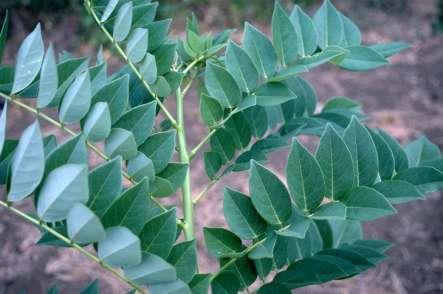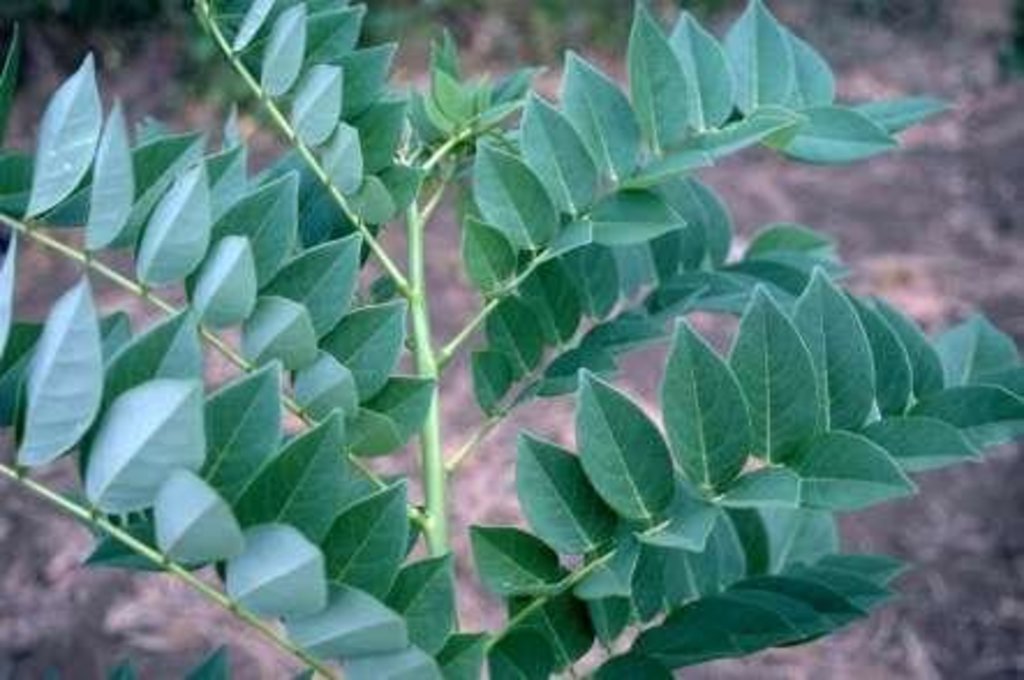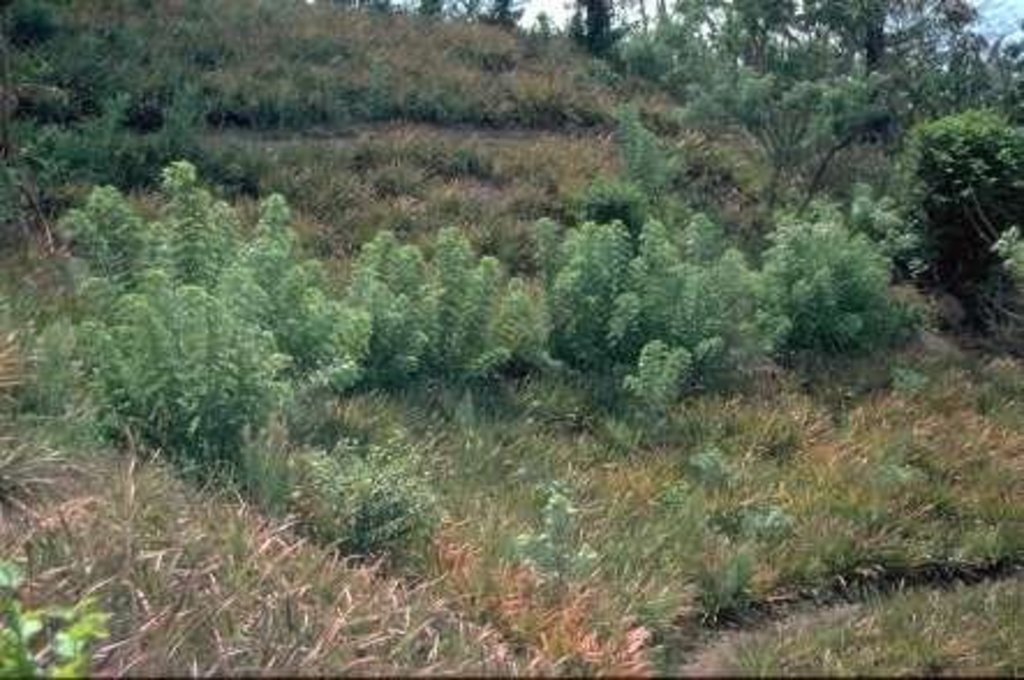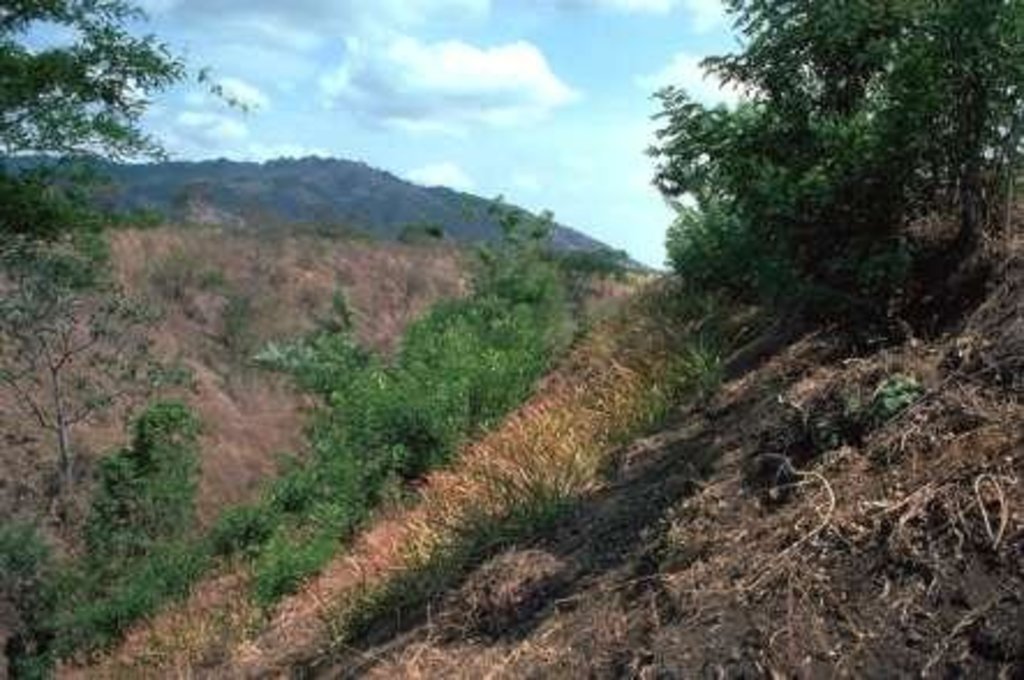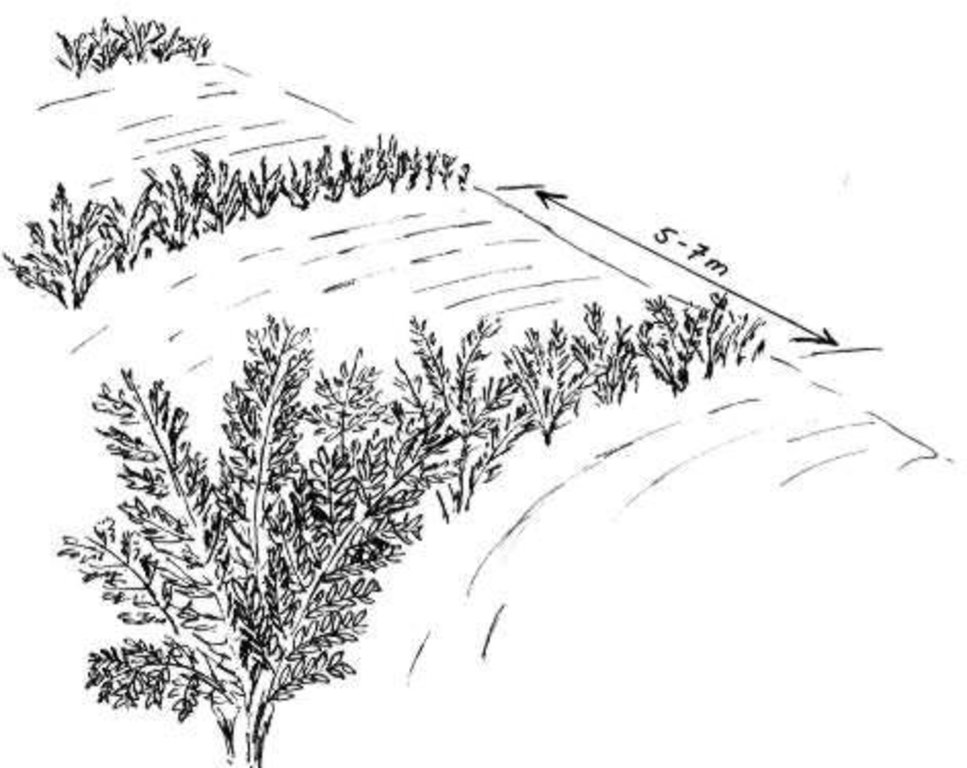Cultivo en callejones de Madero Negro [Nicaragua]
- Creation:
- Update:
- Compiler: Mathias Gurtner
- Editor: –
- Reviewers: Deborah Niggli, Alexandra Gavilano
technologies_1165 - Nicaragua
View sections
Expand all Collapse all1. General information
1.2 Contact details of resource persons and institutions involved in the assessment and documentation of the Technology
SLM specialist:
SLM specialist:
Rodríguez Roger
PASOLAC
Nicaragua
SLM specialist:
Gómez Sergio
Nicaragua
SLM specialist:
Luna Manuel
1.3 Conditions regarding the use of data documented through WOCAT
The compiler and key resource person(s) accept the conditions regarding the use of data documented through WOCAT:
Yes
1.4 Declaration on sustainability of the described Technology
Is the Technology described here problematic with regard to land degradation, so that it cannot be declared a sustainable land management technology?
No
2. Description of the SLM Technology
2.1 Short description of the Technology
Definition of the Technology:
Establecimiento de hileras de árboles de Madero Negro en curvas a nivel a intervalos de 5 a 7 metros sembrando cultivos en los callejones entre las hileras.
2.2 Detailed description of the Technology
Description:
Establecimiento de hileras de árboles de Madero Negro (con el nombre científico Gliricidia sepium, otros nombres: Madrecacao, Madreado, Madrial, Mataratón, Cacahuanance) en curvas a nivel a intervalos de 5 a 7 metros sembrando cultivos en los callejones entre las hileras. Una vez establecido, los árboles se podan cada 2-3 meses dependiendo de su crecimiento para reducir la competencia por la luz entre hileras y cultivos. Se utilizan sobre todo en combinación con cultivos de porte alto que compiten bien con las hileras por la luz. Las hileras de árboles, sembrados en alta densidad, funcionan como barreras vivas para controlar la erosión y proporcionan abono verde, forraje y/o leña mediante las podas. Son obras biológicas bastante complejas que requieren de un buen ordenamiento de la finca y de bastante mano de obra. El objetivo principal de esta práctica es la integración simultanea de árboles y cultivos anuales en el mismo campo y al mismo tiempo aprovechando el terreno disponible al máximo. El Madero Negro es una leguminosa arbustiva de tamaño mediano. Pierde sus hojas en la época seca.
La tecnología esta adecuada para fincas con un uso intensivo de la tierra en sistemas mixtos de granos básicos con ganado por el uso múltiple del material de poda para el suelo, como forraje o para leña.
2.3 Photos of the Technology
2.5 Country/ region/ locations where the Technology has been applied and which are covered by this assessment
Country:
Nicaragua
Region/ State/ Province:
Managua
Further specification of location:
Managua
Comments:
esta tecnología se aplica también en otras zonas de Nicaragua, bajo la asistencia de otros organismos y bajo enfoques diferentes
2.6 Date of implementation
If precise year is not known, indicate approximate date:
- less than 10 years ago (recently)
2.7 Introduction of the Technology
Specify how the Technology was introduced:
- through projects/ external interventions
3. Classification of the SLM Technology
3.1 Main purpose(s) of the Technology
- reduce, prevent, restore land degradation
3.2 Current land use type(s) where the Technology is applied

Cropland
- Perennial (non-woody) cropping
Number of growing seasons per year:
- 2
Specify:
75 días, de Junio hasta Agosto y 100 días de Septiembre hasta Diciembre

Forest/ woodlands
- Madero Negro (Gliricidia sepium)
Comments:
Madero Negro (Gliricidia sepium)
Problemas principales del uso de tierras: monocultivos, comercialización de los productos, falta de organización comunitaria, prácticas inadeacuados de manejo de la tierra, erosión del suelo, falta de recursos económicos
3.4 Water supply
Water supply for the land on which the Technology is applied:
- mixed rainfed-irrigated
3.5 SLM group to which the Technology belongs
- forest plantation management
3.6 SLM measures comprising the Technology

agronomic measures
- A1: Vegetation/ soil cover

vegetative measures
- V1: Tree and shrub cover
Comments:
Tipo de medidas agronómicas: asociación con leguminosas
3.7 Main types of land degradation addressed by the Technology

soil erosion by water
- Wt: loss of topsoil/ surface erosion
3.8 Prevention, reduction, or restoration of land degradation
Specify the goal of the Technology with regard to land degradation:
- prevent land degradation
- reduce land degradation
4. Technical specifications, implementation activities, inputs, and costs
4.1 Technical drawing of the Technology
Technical specifications (related to technical drawing):
Hileras de Madero Negro en contorno. La distancia entre planta y planta varia de 20 a 50 cm. Se práctica la siembra en doble surco pero aumenta la demanda de mano de obra.
Conocimientos técnicos necesarios para el personal / asesores de campo: bajo
Conocimientos técnicos necesarios para los usuarios de la tierra: medio
Principales funciones técnicas: control de la escorrentía dispersa: retener / atrapar, reducción de la longitud de la pendiente, incremento de la infiltración, aumento de la fertilidad del suelo
Medida agronómica: aplicación de "mulch"
Material / especie: residuos de la poda del madero negro
Observaciones: enlas calles entre los cultivos
Especies de árboles / arbustos: madero negro (Gliricidia sepium)
Pendiente (que determina el espaciamiento indicado arriba): 20%
Author:
Mathias Gurtner, Bern, Suiza.
4.2 General information regarding the calculation of inputs and costs
other/ national currency (specify):
Córdobas
If relevant, indicate exchange rate from USD to local currency (e.g. 1 USD = 79.9 Brazilian Real): 1 USD =:
12.5
Indicate average wage cost of hired labour per day:
2.00
4.3 Establishment activities
| Activity | Timing (season) | |
|---|---|---|
| 1. | 1. Trazado de las curvas a nivel empezando en la parte alta de la ladera | abril / mayo (época seca) |
| 2. | 2. Carrileo (limpia del área) | abril / mayo |
| 3. | 3. Marcado de los surcos | abril / mayo |
| 4. | 4. Siembra directa de la semilla remojada por 12-24 horas, con 2-3 semillaspor postura y 5-7 posturas por metro lineal (o a chorillo) | mayo/junio, primera lluvia |
| 5. | 5. Control de las malezas | 3-4 veces durante el primer año |
4.4 Costs and inputs needed for establishment
| Specify input | Unit | Quantity | Costs per Unit | Total costs per input | % of costs borne by land users | |
|---|---|---|---|---|---|---|
| Labour | Mano de obra | ha | 1.0 | 20.0 | 20.0 | 100.0 |
| Plant material | Semillas | ha | 1.0 | 48.0 | 48.0 | |
| Total costs for establishment of the Technology | 68.0 | |||||
| Total costs for establishment of the Technology in USD | 5.44 | |||||
Comments:
Duration of establishment phase: 12 month(s)
4.5 Maintenance/ recurrent activities
| Activity | Timing/ frequency | |
|---|---|---|
| 1. | colocar residuos en calles entre cultivos y en la base superior de cada hilera de madero negro | una en verano, una en agosto y una en noviembre / 3 veces por año |
| 2. | poda | una en verano, una en agosto y una en noviembre / 3 veces por año |
| 3. | 1. Raleo (si se sembró a chorillo, 50 cm entre planta y planta) | /al principio (una vez) |
| 4. | 2.Control de plaga | |
| 5. | 3.Podas periódicas a 30-40cm de alltura. Primera poda un año después de siembra al inicio de lluvias después de siembra al inicio de lluvias. Después cada 2-3 meses. | Primera poda un año después de siembra al inicio de lluvias. /cada 2-3 meses |
| 6. | 4. Poda de las raices: Por lo menos cada segundo año se recomienda una poda de las raices pasando con un arado por ambos lados de la hilera de árboles. | / cada segundo año |
| 7. | 5. Descanso a la parcela: dependiendo de la fertilidad del suelo, sobre todo del subsuelo, se recomienda un descanso a la parcela cada 8-12 años por 2 años para que se recuperen los árboles. | /cada 8-12 años |
4.6 Costs and inputs needed for maintenance/ recurrent activities (per year)
| Specify input | Unit | Quantity | Costs per Unit | Total costs per input | % of costs borne by land users | |
|---|---|---|---|---|---|---|
| Labour | mano de obra | ha | 1.0 | 28.0 | 28.0 | 100.0 |
| Fertilizers and biocides | biocidas | ha | 1.0 | 20.0 | 20.0 | 100.0 |
| Total costs for maintenance of the Technology | 48.0 | |||||
| Total costs for maintenance of the Technology in USD | 3.84 | |||||
Comments:
longitud de las hileras de Madero Negro
4.7 Most important factors affecting the costs
Describe the most determinate factors affecting the costs:
Mano de obra (podas)
5. Natural and human environment
5.1 Climate
Annual rainfall
- < 250 mm
- 251-500 mm
- 501-750 mm
- 751-1,000 mm
- 1,001-1,500 mm
- 1,501-2,000 mm
- 2,001-3,000 mm
- 3,001-4,000 mm
- > 4,000 mm
Specifications/ comments on rainfall:
Crece en zona con más de 700mm de precipitación (hasta 2000 mm) y tolera bien precipitaciones eráticas.
Agro-climatic zone
- sub-humid
Tolera bien precipitaciones eráticas. En zonas secas o semiseca pierde sus hojas durantes la épocas seca. La mucha humedad y el frio afecta el desarrollo del cultivo quedando pequeño y amarillento y c
5.2 Topography
Slopes on average:
- flat (0-2%)
- gentle (3-5%)
- moderate (6-10%)
- rolling (11-15%)
- hilly (16-30%)
- steep (31-60%)
- very steep (>60%)
Landforms:
- plateau/plains
- ridges
- mountain slopes
- hill slopes
- footslopes
- valley floors
Altitudinal zone:
- 0-100 m a.s.l.
- 101-500 m a.s.l.
- 501-1,000 m a.s.l.
- 1,001-1,500 m a.s.l.
- 1,501-2,000 m a.s.l.
- 2,001-2,500 m a.s.l.
- 2,501-3,000 m a.s.l.
- 3,001-4,000 m a.s.l.
- > 4,000 m a.s.l.
5.3 Soils
Soil depth on average:
- very shallow (0-20 cm)
- shallow (21-50 cm)
- moderately deep (51-80 cm)
- deep (81-120 cm)
- very deep (> 120 cm)
Soil texture (topsoil):
- coarse/ light (sandy)
- medium (loamy, silty)
Topsoil organic matter:
- low (<1%)
5.6 Characteristics of land users applying the Technology
Market orientation of production system:
- mixed (subsistence/ commercial)
- commercial/ market
Off-farm income:
- less than 10% of all income
Relative level of wealth:
- poor
Level of mechanization:
- manual work
- animal traction
Indicate other relevant characteristics of the land users:
Densedad de población: 200-500 personas/km2
5.7 Average area of land used by land users applying the Technology
- < 0.5 ha
- 0.5-1 ha
- 1-2 ha
- 2-5 ha
- 5-15 ha
- 15-50 ha
- 50-100 ha
- 100-500 ha
- 500-1,000 ha
- 1,000-10,000 ha
- > 10,000 ha
5.8 Land ownership, land use rights, and water use rights
Land ownership:
- individual, not titled
Land use rights:
- individual
6. Impacts and concluding statements
6.4 Cost-benefit analysis
How do the benefits compare with the establishment costs (from land users’ perspective)?
Short-term returns:
negative
Long-term returns:
positive
How do the benefits compare with the maintenance/ recurrent costs (from land users' perspective)?
Short-term returns:
slightly negative
Long-term returns:
positive
6.5 Adoption of the Technology
Comments:
100% de las familias de usuarios de la tierra han adoptado la tecnología con soporte de material externo
6 familias de usuarios de la tierra han adoptado la tecnología con apoyo material externo
6.7 Strengths/ advantages/ opportunities of the Technology
| Strengths/ advantages/ opportunities in the land user’s view |
|---|
| producción aumenta |
| menos erosión |
| Strengths/ advantages/ opportunities in the compiler’s or other key resource person’s view |
|---|
| aumento de la fertilidad del suelo, menos gastos para compra de fertilizantes |
| producción sostenida |
| multipropósito del material vegetal del madero negro: forraje, abono verde, leña, cobertura vegetal muerta (mulch) |
| consevación del suelo: las barreras vivas en contorno aumentan la infiltración, retrasan la escorrentía superficial y por lo tanto la erosión del suelo |
6.8 Weaknesses/ disadvantages/ risks of the Technology and ways of overcoming them
| Weaknesses/ disadvantages/ risks in the land user’s view | How can they be overcome? |
|---|---|
| mucho trabajo en el primer año | |
| resultados a largo plazo |
7. References and links
7.1 Methods/ sources of information
- field visits, field surveys
- interviews with land users
When were the data compiled (in the field)?
15/06/2000
7.2 References to available publications
Title, author, year, ISBN:
Producción y uso de Gliricidia. Manual de campo. Nitrogen Fixing Tree Association, NFTA, Morrilton, Arkansas. (Glover, N.). 1995.
Title, author, year, ISBN:
Cultivo en Hileras. IITA, Ibadan, Nigeria (Kang, B.T., G.F. Wilson & T.L. Lawson. 1987). 1987.
Title, author, year, ISBN:
Manual Práctico de Manejo de Suelos en Laderas. Secretaría de Recursos Naturales, Tegucigalpa, Honduras (LUPE). 1994
Title, author, year, ISBN:
Alley Farming with Livestock - Guidelines. ILCA, Ibadan, Nigeria (Reynolds, L., A.N. Atta-Krah & P.A. Francis). 1988.
Title, author, year, ISBN:
Arboles de Nicaragua. Instituto Nicaraguense de Recursos Naturales y del Ambiente, MARENA, Managua (Salas Estrada, J.B). 1993.
Links and modules
Expand all Collapse allLinks
No links
Modules
No modules


